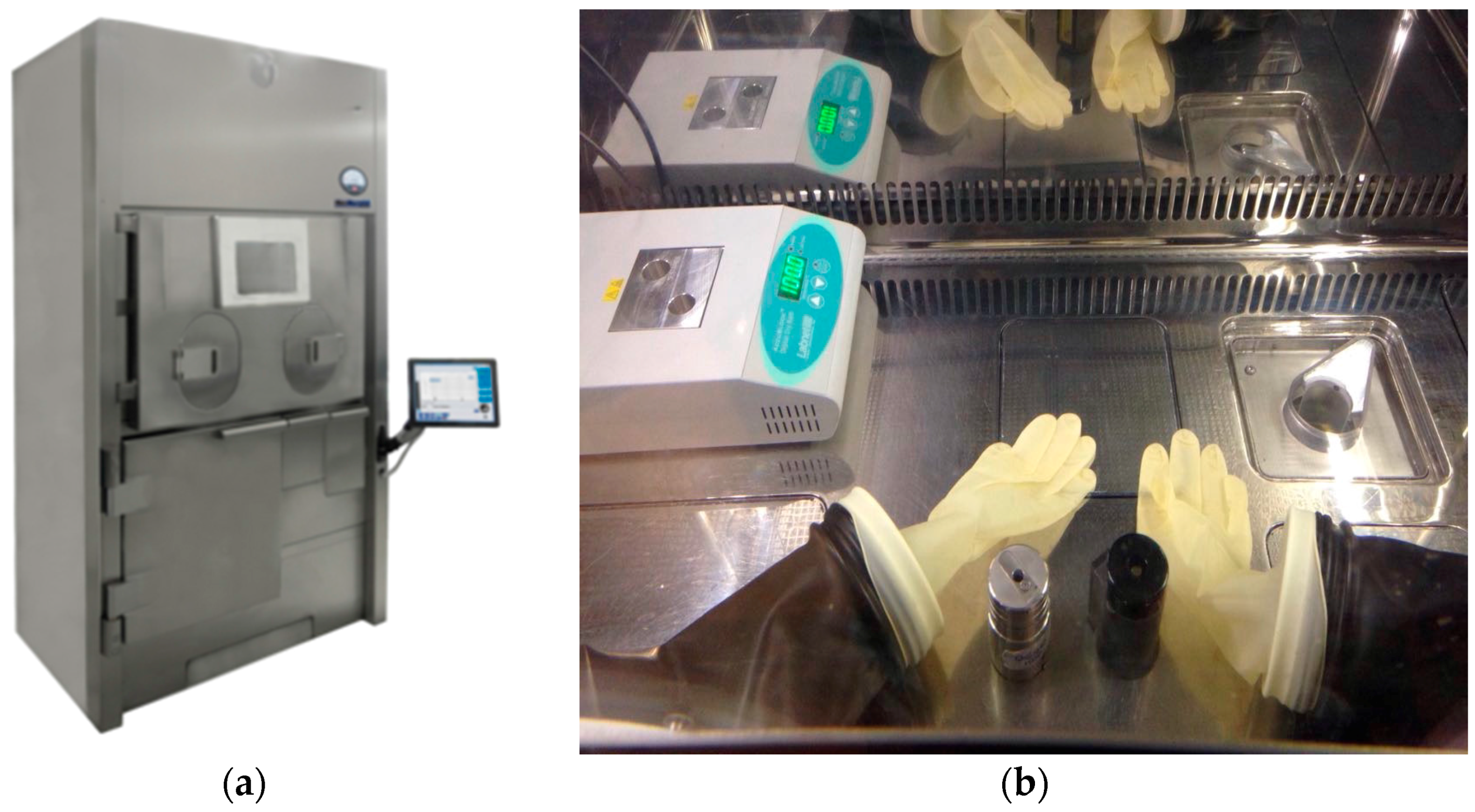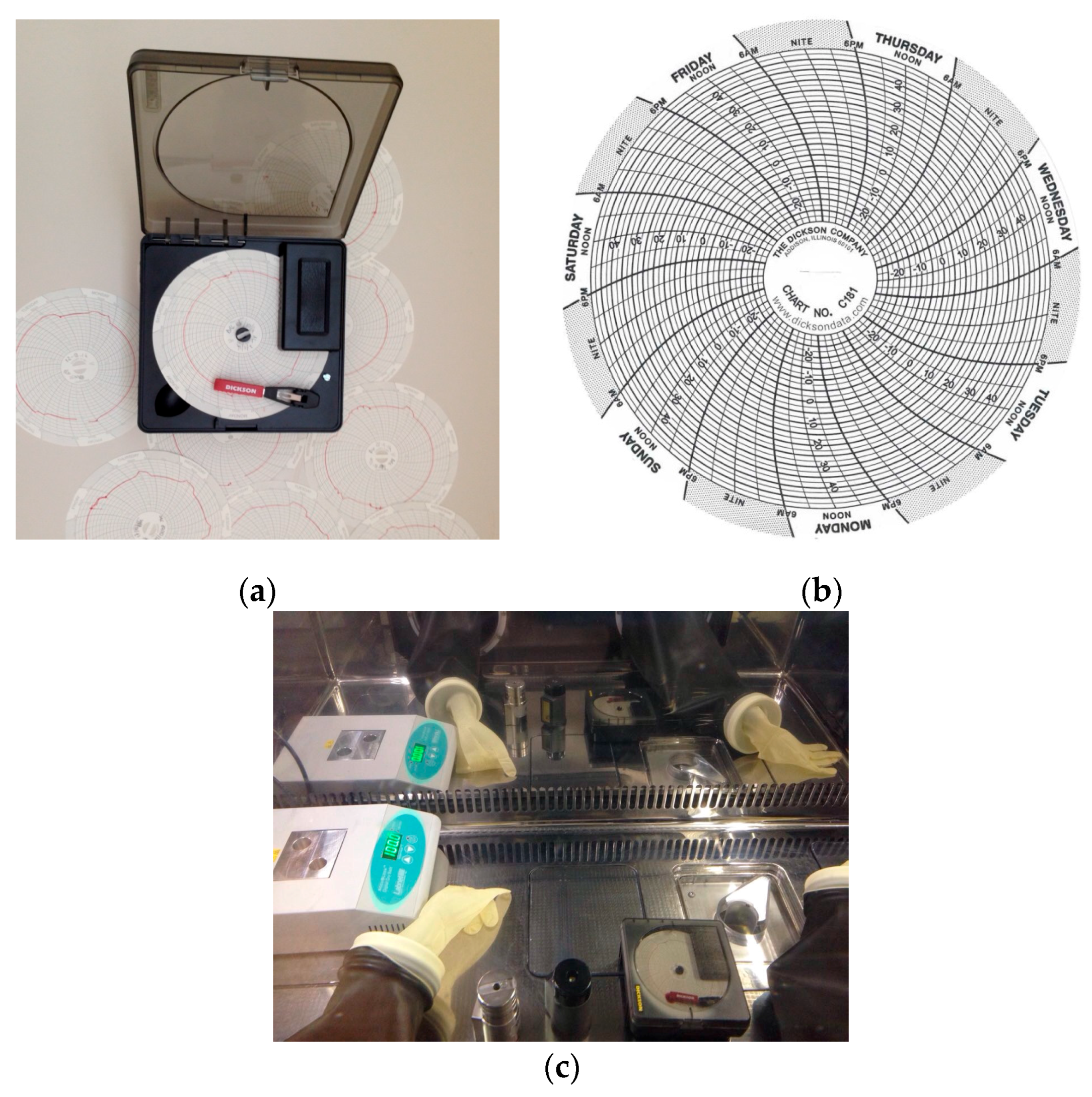Influence of Storage Temperature on Radiochemical Purity of 99mTc-Radiopharmaceuticals
Abstract
:1. Introduction
2. Materials and Methods
2.1. 99mTc-Radiopharmaceuticals Preparation
2.2. 99mTc-Radiopharmaceuticals Radiochemical Purity Assessment
3. Results and Discussion
4. Conclusions
Acknowledgments
Author Contributions
Conflicts of Interest
References
- Vasconcelos dos Santos, E.; Liane de Oliveira, M.; Eudes do Nascimento, J. Influence of humidity on radiochemical purity of 99mTc-ECD and 99mTc-Sestamibi. Radioanal. Nucl. Chem. 2015, 306, 751–755. [Google Scholar] [CrossRef]
- Uccelli, L.; Boschi, A.; Pasquali, M.; Duatti, A.; Di Domenico, G.; Pupillo, G.; Esposito, J.; Giganti, M.; Taibi, A.; Gambaccini, M. Influence of the Generator in-Growth Time on the Final Radiochemical Purity and Stability of 99mTc Radiopharmaceuticals. Sci. Technol. Nucl. Install. 2013, 2013, 7. [Google Scholar] [CrossRef]
- Norenberg, J.P.; Vaidya, M.P.; Hladik, W.B., III; Pathak, D.R.; Born, J.L.; Anderson, T.L.; Carroll, T.R. The effect of selected preparation variables on the radiochemical purity of 99mTc-Sestamibi. J. Nucl. Med. Technol. 2005, 33, 34–41. [Google Scholar] [PubMed]
- Sanchez, C.; Zimmer, M.; Cutrera, P.; McDonald, N.; Spies, S. Radiochemical purity and stability of generic Tc-99m Sestamibi Kits. J. Nucl. Med. 2009, 50, 22–35. [Google Scholar]
- Vallabhajosula, S.; Killeen, R.P.; Osborne, J.R. Altered Biodistribution of Radiopharmaceuticals: Role of Radiochemical/Pharmaceutical Purity, Physiological, and Pharmacologic Factors. Semin. Nucl. Med. 2010, 40, 220–241. [Google Scholar] [CrossRef] [PubMed]
- Uccelli, L.; Martini, P.; Pasquali, M.; Boschi, A. Radiochemical purity and stability of 99mTc-HMPAO in routine Preparations. J. Radioanal. Nucl. Chem. 2017, 314, 1177–1181. [Google Scholar] [CrossRef]
- Maksin, T.; Djokib, D.; Jankovik, D. Effect of Increased Temperature on Labelling Efficiency of Some 99mTc-Radiopharmaceuticals. Label. Compd. Radiopharm. 2001, 44 (Suppl. 1), S636–S638. [Google Scholar] [CrossRef]
- Zolle, I. Technetium-99m Pharmaceuticals: Preparation and Quality Control in Nuclear Medicine; Springer: Berlin, Germany, 2017; ISBN 978-3-540-33990-8. [Google Scholar]
Sample Availability: Samples of the compounds are not available from the authors. |


| Name | Radiopharmaceuticals | Kit Storage Conditions 1 | Radiopharmaceuticals Storage Conditions 1 |
|---|---|---|---|
| Ceretec (GE Healthcare) | [99mTc]Tc-HMPAO | <25 °C (1 year) | <25 °C (30 min) |
| MAASOL (GE Healthcare) | [99mTc]Tc-albumin colloid | 2–8 °C (2 year) | <25 °C (6 h) |
| Nanocoll (GE Healthcare) | [99mTc]Tc-nanocolloid | 2–8 °C (1 year) | <25 °C (6 h) |
| Renocis (IBA molecular) | [99mTc]Tc-DMSA | 2–8 °C (1 year) | 15–25 °C (8h) |
| Technemibi (Mallinckrodt) | [99mTc]Tc-MIBI | <25 °C (2 year) | <25 °C (10 h) |
| Technescan HDP (Mallinckrodt) | [99mTc]Tc-HDP | <25 °C (2 year) | <25 °C (8 h) |
| Technescan MAG3 (Mallinckrodt) | [99mTc]Tc-MAG3 | 2–8 °C (1 year) | <25 °C (8 h) |
| Compound | Synthesis | Quality Control System | Quality Control Time |
|---|---|---|---|
| Ceretec (GE Healthcare) [99mTc]Tc-HMPAO N = 24 | Volume: 5 mL Activity: 1.10 GBq 1 Incubation Time: 30 s Package leaflet: 03/2016 | TLC-SA Methylethylketone (MEK) | 0 min, 15 min, 30 min |
| TLC-SA physiological solution | |||
| MAASOL (GE Healthcare) [99mTc] Tc-albumin colloid N = 24 | Volume: 8 mL Activity: 2.96 GBq Incubation Time: 5 min Package leaflet: 03/2015 | ITLC-SG Methanol:water (85:15, v:v) | 0 h, 3 h, 6 h |
| Nanocoll (GE Healthcare) [99mTc]Tc-nanocolloid N = 80 | Volume: 5 mL Activity: 5.55 GBq Incubation Time: 30 min Package leaflet: 11/2015 | TLC-SA Methanol:water (85:15, v:v) | 0 h, 3 h, 6 h |
| Renocis (IBA molecular) [99mTc]Tc-DMSA N = 8 | Volume: 6 mL Activity: 3.70 GBq Incubation Time: 10 min Package leaflet: 05/2011 | Whatman n.1 MEK | 0 h, 4 h, 8 h |
| Technemibi (Mallinckrodt) [99mTc]Tc-MIBI N = 24 | Volume: 3 mL Activity: 11.10 GBq Incubation Time: 10 min, 100 °C Package leaflet: 10/2014 | Baker flex aluminum oxide Ethanol >95% | 0 h, 5 h, 10 h |
| Technescan HDP (Mallinckrodt) [99mTc]Tc-HDP N = 60 | Volume: 10 mL Activity: 11.10 GBq Incubation Time: 30 s Package leaflet: 08/2017 | TLC-SG 13.6% sodium acetate | 0 h, 4 h, 8 h |
| TLC-SG MEK | |||
| Technescan MAG3 (Mallinckrodt) [99mTc]Tc-MAG3 N = 24 | Volume: 10 mL Activity: 2.96 GBq 2 Time: 10 min, 120 °C Package leaflet: 02/2017 | RP-18 54/45/1 (saline/methanol/glacial acetic acid) | 0 h, 4 h, 8 h |
| Day 1 | Temperature °C (8:00–12:00) | Temperature °C (12:00–18:00) |
|---|---|---|
| Monday | 29.0 ± 1.4 | 30.0 ± 1.4 |
| Tuesday | 30.0 ± 1.4 | 30.0 ± 1.4 |
| Wednesday | 30.0 ± 1.4 | 29.0 ± 1.4 |
| Thursday | 30.0 ± 1.4 | 31.0 ± 1.4 |
| Friday | 29.0 ± 1.4 | 30.0 ± 1.4 |
| Saturday/Sunday | 23.0 ± 1.4 | 23.0 ± 1.4 |
| Radiopharmaceuticals | RCP-1 (%) 1 | RCP-2 (%) 2 | RCP-3 (%) 3 | RCP (%) Expected Value |
|---|---|---|---|---|
| Ceretec (GE Healthcare) [99mTc]Tc-HMPAO N = 24 | 98.1 (±1.0) 31.0 °C (±0.5) | 94.8 (±1.1) 31.0 °C (±0.5) | 94.5 (±2.1) 31.0 °C (±0.5) | ≥80% |
| MAASOL (GE Healthcare) [99mTc]Tc-albumin colloid N = 24 | 100.0 (±0.0) 32.0 °C (±0.5) | 100.0 (±0.0) 32.0 °C (±0.5) | 100.0 (±0.0) 30.0 °C (±0.5) | ≥95% |
| Nanocoll (GE Healthcare) [99mTc]Tc-nanocolloid N = 80 | 99.10 (±0.09) 29.0 °C (±0.3) | 100.0 (±0.0) 29.0 °C (±0.3) | 99.3 (±1.2) 29.0 °C (±0.3) | ≥95% |
| Renocis (IBA molecular) [99mTc]Tc-DMSA N = 8 | 100.0 (±0.9) 33.0 °C (±0.9) | 100.0 (±0.9) 29.0 °C (±0.9) | 100.0 (±0.9) 29.0 °C (±0.9) | ≥95% |
| Technemibi (Mallinckrodt) [99mTc]Tc-MIBI N = 24 | 98.4 (±0.2) 29.0 °C (±0.5) | 99.1 (±0.7) 29.0 °C (±0.5) | 98.9 (±0.8) 29.0 °C (±0.5) | ≥94% |
| Technescan HDP (Mallinckrodt) [99mTc]Tc-HDP N = 60 | 100.0 (±1.2) 33.0 °C (±0.3) | 98.8 (±1.6) 33.0 °C (±0.3) | 98.9 (±1.8) 31.0 °C (±0.3) | ≥95% |
| Technescan MAG3 (Mallinckrodt) [99mTc]Tc-MAG3 N = 24 | 100.0 (±0.0) 30.0 °C (±0.5) | 99.5 (±0.5) 30.0 °C (±0.5) | 99.4 (±0.5) 29.0 °C (±0.5) | ≥94% |
© 2018 by the authors. Licensee MDPI, Basel, Switzerland. This article is an open access article distributed under the terms and conditions of the Creative Commons Attribution (CC BY) license (http://creativecommons.org/licenses/by/4.0/).
Share and Cite
Uccelli, L.; Boschi, A.; Martini, P.; Cittanti, C.; Bertelli, S.; Bortolotti, D.; Govoni, E.; Lodi, L.; Romani, S.; Zaccaria, S.; et al. Influence of Storage Temperature on Radiochemical Purity of 99mTc-Radiopharmaceuticals. Molecules 2018, 23, 661. https://doi.org/10.3390/molecules23030661
Uccelli L, Boschi A, Martini P, Cittanti C, Bertelli S, Bortolotti D, Govoni E, Lodi L, Romani S, Zaccaria S, et al. Influence of Storage Temperature on Radiochemical Purity of 99mTc-Radiopharmaceuticals. Molecules. 2018; 23(3):661. https://doi.org/10.3390/molecules23030661
Chicago/Turabian StyleUccelli, Licia, Alessandra Boschi, Petra Martini, Corrado Cittanti, Stefania Bertelli, Doretta Bortolotti, Elena Govoni, Luca Lodi, Simona Romani, Samanta Zaccaria, and et al. 2018. "Influence of Storage Temperature on Radiochemical Purity of 99mTc-Radiopharmaceuticals" Molecules 23, no. 3: 661. https://doi.org/10.3390/molecules23030661
APA StyleUccelli, L., Boschi, A., Martini, P., Cittanti, C., Bertelli, S., Bortolotti, D., Govoni, E., Lodi, L., Romani, S., Zaccaria, S., Zappaterra, E., Farina, D., Rizzo, C., Giganti, M., & Bartolomei, M. (2018). Influence of Storage Temperature on Radiochemical Purity of 99mTc-Radiopharmaceuticals. Molecules, 23(3), 661. https://doi.org/10.3390/molecules23030661








